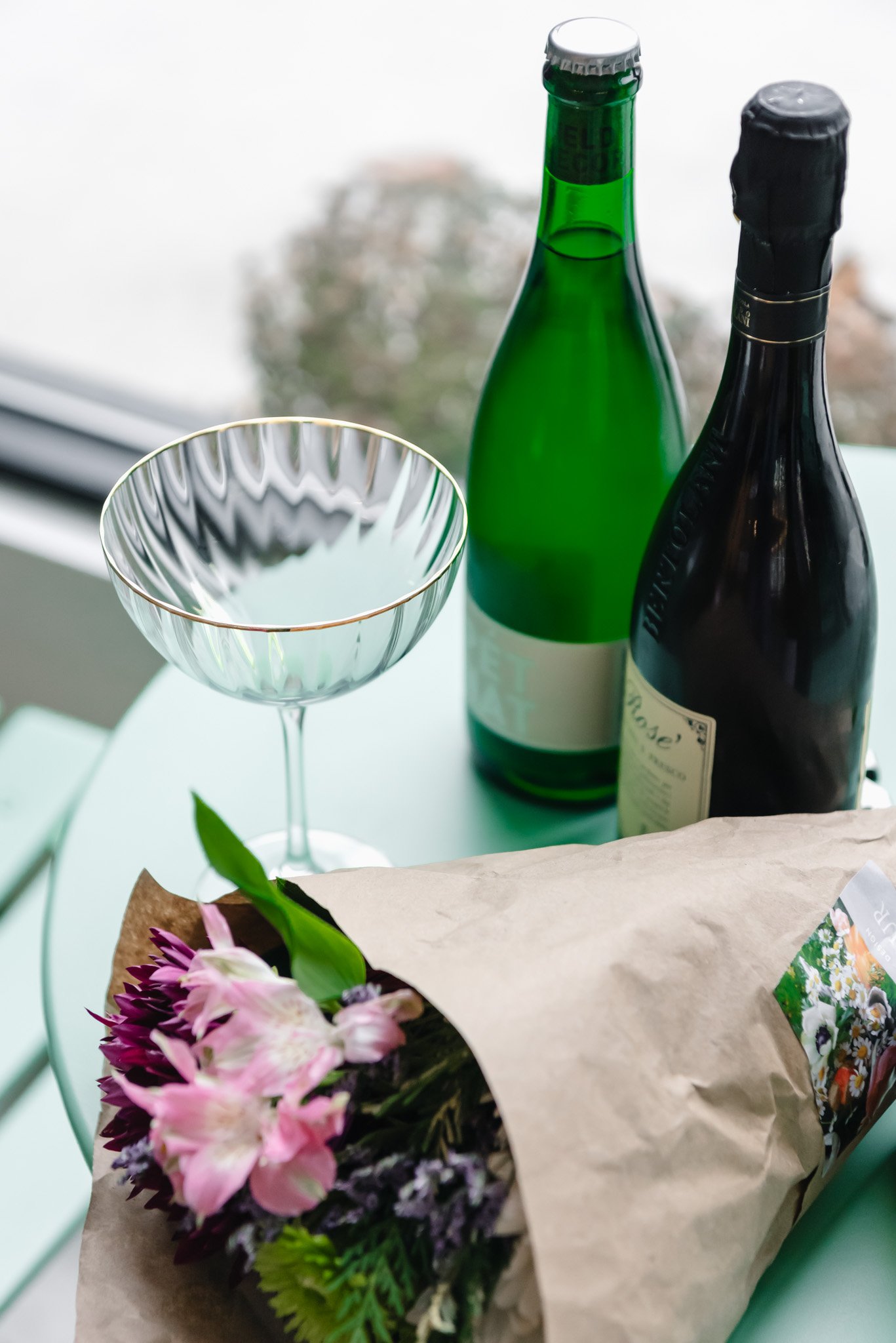Are All Bubbles Created Equal?
Champagne, Prosecco, Crémant, Pét-Nat… what’s in a name?! As it turns out, quite a lot! From region to method of creating carbonation to varietals used, not all bubbles are created equal. And since I’ve already confessed my love for all things bubbly, a ‘Sparkling 101’ primer feels like a good start to this blog. We’ve got a lot to dive into, so let’s get started…
A crucial component to navigating sparkling wine is knowing the three main methods of production (aka creating the bubbles): Traditional Method (used to create Champagne), Charmat Method (used to create Prosecco), and Ancestral Method (used to create Pét-Nat/Pétillant Naturel). Each is a unique way to turn wine into sparkling wine and understanding the process will help you appreciate what’s in your glass.
Traditional Method: starts with a dry still wine base that is then bottled with a small amount of yeast and sugar (known as dosage). As the yeast and sugar ferment (secondary fermentation), more alcohol is produced along with CO2 which creates bubbles. The bottles must then age for at least 9 months, but Champagne in particular must age a minimum of 15 months for nonvintage and 3 years for vintage. During the aging process bottles must also be ‘riddled’ which is a fancy way to say ‘rotating the bottles.’ This is the most labor intensive and time consuming method of production (and time is money as they say) which helps explain the cost of these bottles. Crémant and Cava also use this method.
Charmat Method: is another popular method of sparking production and most famously used to make Prosecco. Because it’s the simplest in many ways it helps explain why Prosecco and other bottles created in this style are more affordable. The secondary fermentation (when wine becomes sparkling wine) is done in a tank (vs individual bottles) requiring less labor and producing more product more quickly. It’s also aged for significantly less time resulting in fresh and fruity bubbly designed to drink now (not later). Prosecco, however (similarly to Champagne), has it’s own set of regulations restricting where it can be produced (9 provinces in northeastern Italy) and what it can be made from (minimum 85% Glera grapes). Most American sparkling is made using this method.
Ancestral Method: this is a fun one! I’d say it’s new because trendy natural wines often use this method (those bottles with ‘pop tops?’ yep!), but actually it’s the OLDEST method of creating sparkling wine (hence the name). So I guess you could say the old kid on the block is the new kid on the block?! Anyway, with this method, the grape juice is fermented the same way as still wine until a certain level of sugar remains at which point it is bottled to finish fermenting. The CO2 produced is then trapped in the bottle creating bubbles. These bubbles tend to be more delicate and lively (think effervescent) and the wine a bit cloudy (because it is not disgorged aka the method of removing sediment from the bottle). This is also the only method that creates sparkling wine through a single (vs double) fermentation. The cool kids/natural wines utilize this method.
Method of creating bubbles isn’t the only element that distinguishes one variety of sparkling wine from another, but it’s definitely a good start. I’ll be picking this topic up again in future posts, but in the meantime… pop a bottle (or two) and notice the differences. And psst… I’ll just keep on saying it… stop saving your bubbly for special occasions. Sparkling wine is perfect to drink everyday just because with anything and everything (it pairs shockingly well with a variety of foods) or nothing at all.
